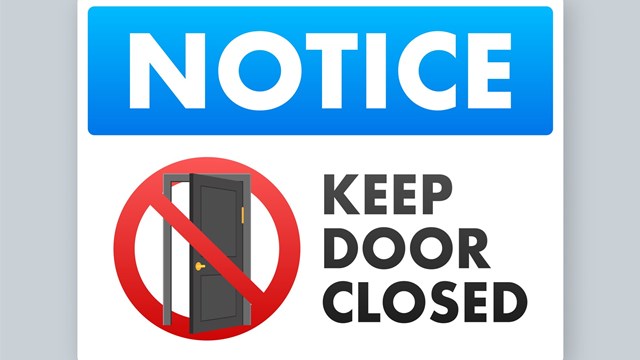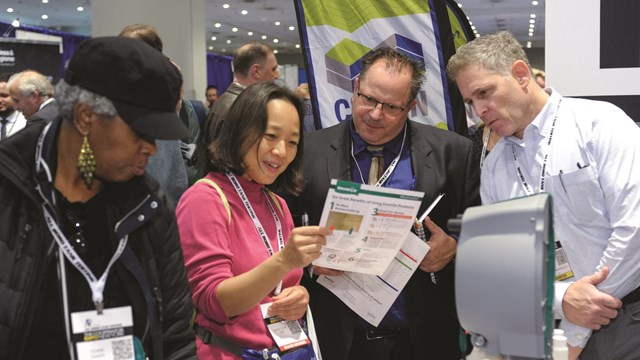
All homeowners worry about adequate security, but many HOAs and condo associations overspend on guards, surveillance cameras, and electronic security systems. There are low-tech, more cost-effective solutions for suburban associations, though, like neighborhood watch programs, where involved residents organize themselves to observe and report important concerns.
In New Jersey, neighborhood watch programs have been on the rise for 30 years, according to Howard E. Butt, state coordinator of the New Jersey Citizen Corps, with a sharp growth after 9/11. That’s when the New Jersey State Police, the Office of Emergency Management, the New Jersey Citizen Corps State Council, the League of Municipalities, the Chiefs of Police Association and the Sheriff’s Association joined forces to introduce the Neighborhood Watch-New Jersey initiative.
The program’s goals, Butt writes in a statement called “Neighborhood Watch: A Fresh Perspective,” are to “strengthen and revitalize existing neighborhood watch groups and to establish new groups in cooperation with local law enforcement agencies.” Neighborhood watches are separate from the CERT (Community Emergency Response Team) program, which focuses on helping first responders during emergencies and disasters—although, of course, there’s nothing to stop the same individual from participating in both.
High-Tech Isn’t Always Enough
Even if an association employs surveillance cameras and other high-tech systems, there can be potential “blind spots,” making for a false sense of security. Indeed, there is a benefit for criminals to be aware that residents are organized, watching, and on guard through these established programs.
“All prevention methods work best when implemented together,” says Elaine Warga-Murray, CEO and managing partner of Regency Management Group in Howell, New Jersey. “A surveillance system is usually only in certain areas, and even a roving security staff vehicle can’t be everywhere. When there are aware residents who work effectively with staff and the municipality, there is a much safer environment. Usually, this also assists in keeping young adults and youngsters from congregating and creating disturbances or damage to common areas.”
How Watch Groups Evolved
Ken Fullagar, emergency management director and watch coordinator for Long Hill Township, traces the history of neighborhood watch groups in New Jersey. Early watch groups, he says, reminded people to close windows, alert newspaper deliveries of vacation periods, recommended timed light systems, and had other people cutting the lawns. These issues are still important, but after 9/11, there was an additional focus on terrorism awareness.
The program in his township, which is part of New Jersey Citizen Corps initiative, reacts to local situations. “What we do here is involve the community,” he says. “Everyone who registers gets a combined bulletin every week from the Police Department and OEM. For example, if we see that there are people breaking into cars, and we find all the cars that were broken into were left unlocked and had valuables left on the seats, we send a directive telling people not to do this. It’s the same thing if we see bikes left in people’s driveways.”
The program has proven results. Fullagar exemplifies that a “peeping tom” was plaguing one area. The police alerted people, and several members of the neighborhood watch provided information about what they believed to be suspicious persons. “As a result of what one person reported, we got into pursuit of one individual. We didn’t capture him but the problem immediately ceased because the perpetrator now knew the authorities—and the residents—were onto him.”
“It is my experience,” says Warga-Murray, “that the neighborhood watch programs do an effective job of reducing vandalism and generally intimidate drivers from scouting neighborhoods. We have seen a reduction of unknown traffic when neighborhood watch signs are installed.”
Municipality vs. Condo or HOA?
Is there a difference between a neighborhood watch in a municipality and an association watch in a planned community or condo development? Ron Perl, a partner in the Princeton office of the law firm of Hill Wallack LLP, who has long been active in the Community Associations Institute of New Jersey (CAI-NJ), says that when a condo wants to form a watch group, “the association is basically treated as a neighborhood. There is an interface with the local police department, which usually has an officer or two assigned to watch groups. The residents receive whatever training is needed. The association is simply a vehicle to get people together to join the neighborhood watch program.”
Michelle Boykins, a spokeswoman for the National Crime Prevention Council, adds that, “In a condo or apartment complex, it may be more difficult to know all of your neighbors and to know if someone doesn’t belong or should be considered suspicious.”
How They Work
Once such groups are established, they work to fight crime in several ways. They can conduct home safety surveys, provide tips about going on vacation, post neighborhood watch signs and stickers on homes, and get security-oriented outdoor lighting installed.
Any resident can start a neighborhood watch program, and the costs are minimal other than the investment of personal time. There just needs to be a number of willing participants involved.
“Generally, a manager can work with the board to schedule meetings with residents and municipalities and post notices on the web site, in a newsletter and/or message board to encourage residents to participate,” says Warga-Murray. “Once there is a core group, regular meetings and updates and neighborhood watch events help keep the momentum going.”
In New Jersey, the Citizen Corps provides training for existing and new neighborhood watch groups, according to Butt. The training focuses on home and family safety, personal safety, terrorism awareness, how to report suspicious activity, and community and neighborhood concerns.
“Home and family safety,” he says, “focuses on review of basic safety practices to safeguard your home, how to establish an emergency communications plan and how to prepare a disaster supplies kit. Personal safety focuses on awareness and having an action plan, including information on identity theft, one of the fastest-growing crimes in the nation.”
Butt continues, “Terrorism awareness provides information about what you should do at each officially directed level of alertness, how to identify suspicious mail and packages, and what to do if you find one. How to report suspicious activity and local community/neighborhood concerns are self-explanatory. Training materials, including a PowerPoint presentation, are available on CD.”
What They Watch For
Fullagar adds that most neighborhood watch program members know when something is worth reporting. “If they see a black van going around the area really slow, back and forth, with someone occasionally getting out and looking around, they know this is something to call law enforcement about,” he says.
In addition to citing suspicious circumstances, members of watch groups can also look after people who may be isolated and vulnerable, such as the elderly and the disabled, and take note of situations that might invite crime, such as broken or non-working street lights. And above all, members must stay alert.
“If you see something, you should call the police department immediately,” Fullagar says. “Don’t wait until the next day.”
Zimmerman Case Atypical
Of course, any discussion of current or future neighborhood watch programs must include at least a mention of the shooting of Trayvon Martin. The facts of the case are well-known, thanks to the media attention it garnered: One night in February 2012, in a gated community in Sanford, Florida, neighborhood watch volunteer George Zimmerman followed 17-year-old Trayvon Martin, whom Zimmerman deemed suspicious. Despite the fact that a police officer told Zimmerman he should not follow Martin, Zimmerman continued his pursuit, engaged Martin, and after a struggle, shot and killed the unarmed teen. The case became a cause célèbre, with widespread allegations of racism and vigilantism on Zimmerman’s part. Zimmerman’s eventual acquittal on second-degree murder charges did little to end the controversy.
In the wake of the Zimmerman case, neighborhood watch groups were unfairly labeled as supporters of vigilante justice. The difference between legitimate neighborhood watches—which act as eyes and ears of the community—and vigilantism, or people taking the law into their own hands, though, seems to be cooperation between the watch group members and law enforcement agencies.
While, thankfully, situations like the Zimmerman case are very rare, it isn’t unknown to have a volunteer on a Neighborhood Watch group who seems a little over-zealous. If this is the case, says Boykins, “then it is best to discuss their behavior with them or hold a meeting with the watch group to discuss guidelines and parameters for all volunteers to follow.”
Warga-Murray concurs: “This is usually corrected quickly by working with the overzealous and cautioning them not to approach people, knock on doors or harass their neighbors.”
Raising Awareness
Once a neighborhood watch program is established, participating members should raise awareness of its progress and evolution. Members can do so, says Fullagar, by normal conversation and simply mentioning the program when they’re talking to neighbors. Such networking will dramatically contribute to its growth. “We get two to three calls a week from people who want to participate in the program,” says Fullagar.
The program can be further publicized for effectiveness through sponsorship or involvement in neighborhood barbecues and gatherings, condo associations or HOAs inviting a program representative to address a community meeting, and participation in other neighborhood functions like nearby park to clean-ups and community yard sales.
How effective are neighborhood watch programs overall? Boykins quotes a 2008 study by the U.S. Justice Department titled “Does Neighborhood Watch Reduce Crime?” On average, the study cites, there was a 16 percent crime decline in communities with a watch programs. The results of evaluations are mixed, though and show that some programs work well, while others appear to work less well.
The most successful stories, Warga-Murray says, focus on stopping vandalism. Bullying and teen violence are effectively managed by neighborhood watch program activity, as well, she claims.
For most condos and HOA developments, especially those with a more widespread layout, neighborhood watch programs are worthy of exploration and trial. Residents or board members with an interest in learning more can contact local police departments or reach out to the New Jersey Citizen Corps directly online at www.state.nj.us/njoem/citizen/citizen.html.
Raanan Geberer is a freelance writer and a frequent contributor to The New Jersey Cooperator.






Leave a Comment